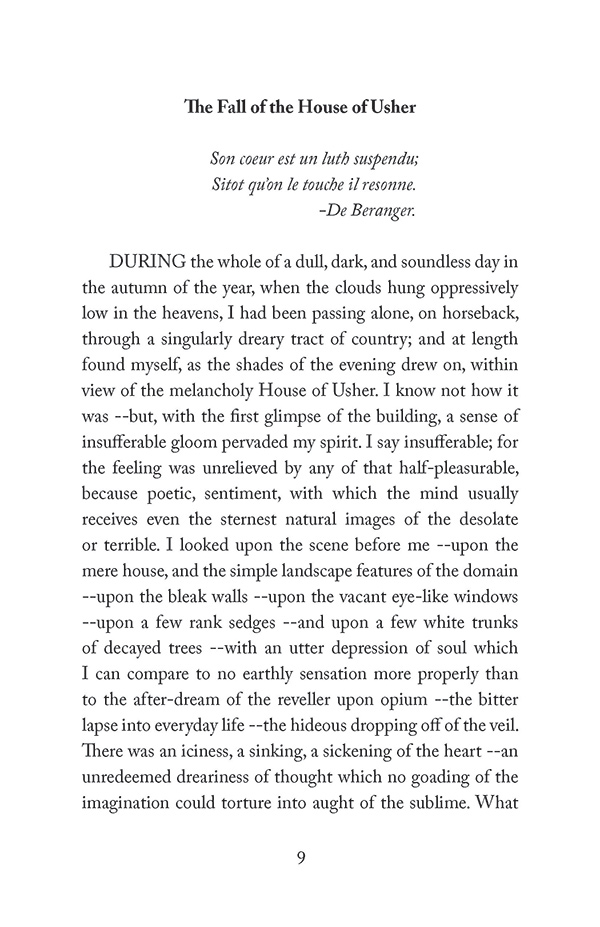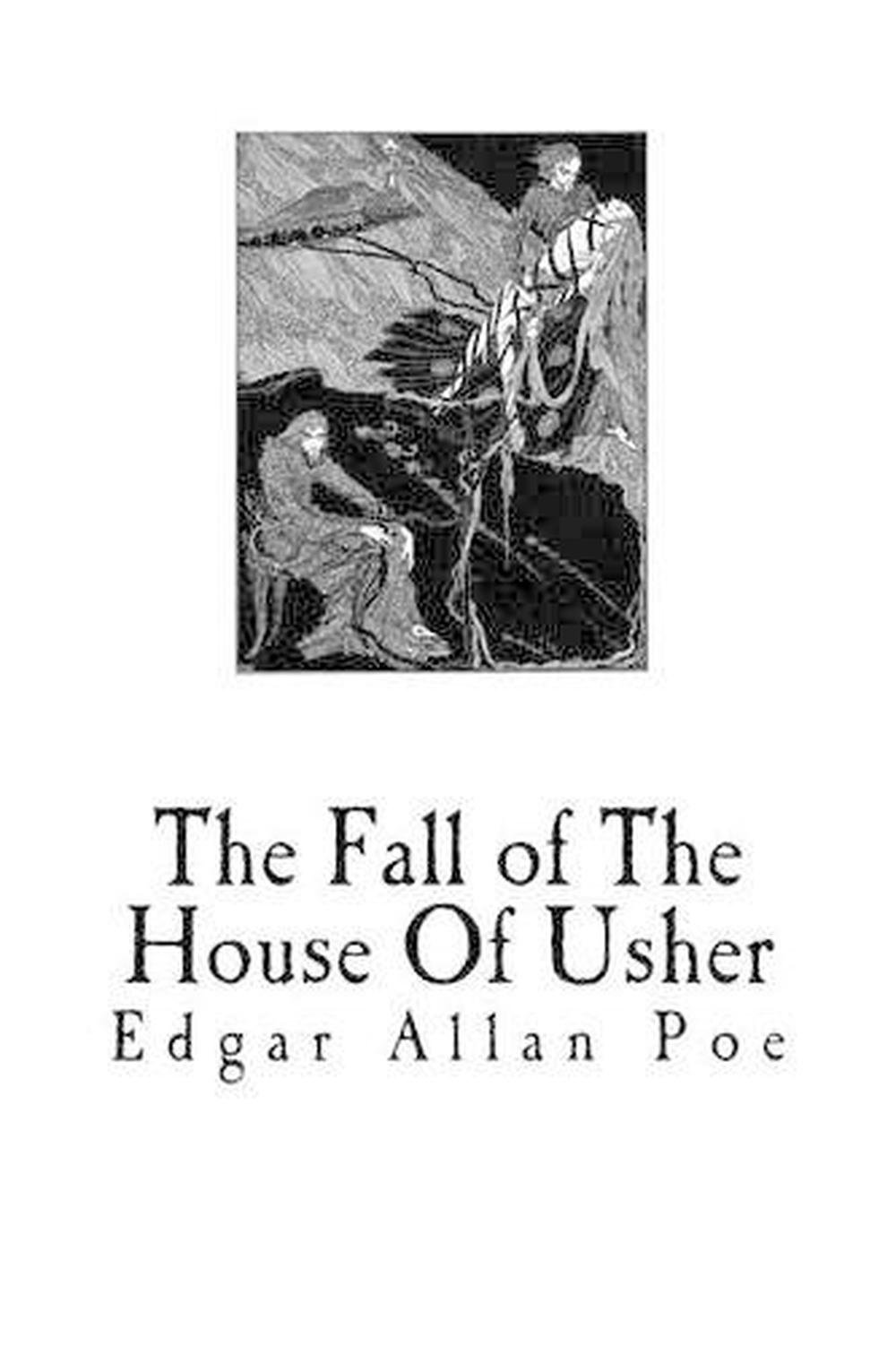Table Of Content

Flanagan finishes his Netflix contract on a high, gleefully capturing Poe’s magic, eerie romance and sense of dread. His shows have become the streaming service’s best offerings for spooky season, and it is hard to imagine how that void will be filled. It’s not perfect – the order in which the Poe family meet their fates is a case of diminishing returns, as its most intriguing members are dispatched too quickly.
Every hidden Poe reference in 'Fall of the House of Usher'

A mere glimpse of the Usher mansion inspires in the narrator “an iciness, a sinking, a sickening of the heart.” Upon entering the house, the reader as the narrator navigates through a series of dark passages lined with carvings, tapestries, and armorial trophies. Poe draws heavily on Gothic conventions, using omens and portents, heavy storms, hidden passageways, and shadows to set the reader on edge. A week after Madeline’s death, the narrator lies awake with an unexplainedfeeling of fear.
Viewing your signed in accounts
He paints a dark underground tunnel with beams ofstrange light shining through. Usher writes songs on his guitar, and thenarrator recounts one entitled “The Haunted Palace.” In the song a prosperouspalace falls, and only dancing ghosts remain. Roderick admits he believes theUsher house is sentient and that a foul atmosphere grows from the grounds. Hestates that the house has moulded generations of the Usher family and hascaused his current state.
R.U.E. is a big Poe reference and a plot clue.
Poe’s writing helped elevate the genre from a position of critical neglect to an art form. “The Fall of the House of Usher” stands as one of Poe’s most popular and critically examined stories. Whether the reader is trapped by the house or by its inhabitants is unclear. Poe uses the term house to describe both the physical structure and the family.
Vic has a tiny pendulum on her shelf in episode 5.

The story opens with the narrator riding alone on a cloudy autumn day to theHouse of Usher. He describes a childhood friendship with the owner, Roderick Usher.Roderick had requested the narrator’s company during his convalescence from anillness. The narrator reflects on the once-great Usher family and that theyhave only one surviving direct line of descendants, comparing the beautiful butcrumbling house to the family living inside. As the narrator reads of the knight's forcible entry into the dwelling, he and Roderick hear cracking and ripping sounds from somewhere in the house. When the dragon's death cries are described, a real shriek is heard, again within the house.
A Summary and Analysis of Edgar Allan Poe’s ‘The Fall of the House of Usher’
“It’s batshit crazy in the best possible way,” Carla Gugino told Netflix during production. “It has quite a lot of very dark humor, but also really touches the soul.” In the series, Gugino portrays a shape-shifter named Verna, whose origins can be traced back to a — let’s just say — very famous Poe character. “There is a fantastical supernatural element to the story, and she is the manifestation of that,” she added. As these first look photos and posters reveal, Verna isn’t one to be played with. “You could say she’s the executor of fate or the executor of karma,” said Gugino. His father disappeared not long after the child’s birth, and, at the age of three, Poe watched his mother die of tuberculosis.
Reembrace your creepy old pal Edgar Allan Poe in 'Fall of the House of Usher' - NPR
Reembrace your creepy old pal Edgar Allan Poe in 'Fall of the House of Usher'.
Posted: Sat, 07 Oct 2023 07:00:00 GMT [source]
Popularized by Nathaniel Hawthorne, Romantic literature, like Gothic literature, relies on haunting and mysterious narratives that blur the boundary between the real and the fantastic. Poe’s embrace of the Gothic with its graphic violence and disturbing scenarios places him outside the ultimately conservative and traditional resolutions of Romantic novels such as Hawthorne’s The House of the Seven Gables (1851). However, Roderick cannot keep her hidden for long, and she bursts out again in a frenzy – much as Freud would later argue our unconscious drives and desires cannot be wholly repressed and will find some way of making themselves known to us (such as through dreams). Foreshadowing the death of her brother Frederick, Vic's office in the R.U.E Morgue has a few tasteful decorations, and one not so tasteful — it's a pendulum.
In film and television
‘The Fall of the House of Usher’ is an 1839 short story by Edgar Allan Poe ( ), a pioneer of the short story and a writer who arguably unleashed the full psychological potential of the Gothic horror genre. The story concerns the narrator’s visit to a strange mansion owned by his childhood friend, who is behaving increasingly oddly as he and his twin sister dwell within the ‘melancholy’ atmosphere of the house. Just like in the episode, Poe's short story of the same name features a party thrown by a character called Prospero (played in the series by Sauriyan Sapkota) which is crashed by a mysterious masked figure. Instead of contending with acid falling through overhead sprinklers, the politically influential revellers in Poe's story are the aristocracy trying to escape a plague within the privileged confines of the prince's palace — but in the end, it comes for them all. There are many overlaps in the design of Prince Prospero's party however, as Poe's tale describes many rooms for debauchery, and of course, it's a masquerade.
Roderick Usher
Dreams, for instance, are the way our unconscious mind communicates with our conscious mind, but in such a way which shrouds or veils their message in ambiguous symbolism and messages. Roderick Usher is a gifted poet and artist, whose talents the narrator praises before sharing a poem Usher wrote, titled ‘The Haunted Palace’. The ballad concerns a royal palace which was once filled with joy and song, until ‘evil things’ attacked the king’s palace and made it a desolate shadow of what it once was.
With this foreboding introduction, we enter the interior through a Gothic portal with the narrator. With him we encounter Roderick Usher, who has changed drastically since last the narrator saw him. His cadaverous appearance, his nervousness, his mood swings, his almost extrahuman sensitivity to touch, sound, taste, smell, and light, along with the narrator’s report that he seems lacking in moral sense, portrays a deeply troubled soul. We learn, too, that his twin sister, Madeline, a neurasthenic woman like her brother, is subject to catatonic trances.
In the tale's conclusion, Madeline escapes from the tomb and returns to Roderick, scaring him to death. From his arrival, the narrator notes the family's isolationist tendencies, as well as the cryptic and special connection between Madeline and Roderick, the final living members of the Usher family. Throughout the tale and her varying states of consciousness, Madeline completely ignores the narrator's presence. After Roderick Usher claims that Madeline has died, the narrator helps Usher entomb Madeline in an underground vault despite noticing Madeline's flushed, lifelike appearance. The bedroom door is then blown open to reveal Madeline, bloodied from her arduous escape from the tomb. In a final fit of rage, she attacks her brother, scaring him to death as she herself expires.
His name has since become synonymous with macabre tales like “The Tell-Tale Heart,” but Poe assumed a variety of literary personas during his career. The Messenger—as well as Burton’s Gentleman’s Magazine and Graham’s—established Poe as one of America’s first popular literary critics. In the pages of these magazines, Poe also introduced of a new form of short fiction—the detective story—in tales featuring the Parisian crime solver C. The detective story follows naturally from Poe’s interest in puzzles, word games, and secret codes, which he loved to present and decode in the pages of the Messenger to dazzle his readers. The word “detective” did not exist in English at the time that Poe was writing, but the genre has become a fundamental mode of twentieth-century literature and film. Dupin and his techniques of psychological inquiry have informed countless sleuths, including Sir Arthur Conan Doyle’s Sherlock Holmes and Raymond Chandler’s Philip Marlowe.
No comments:
Post a Comment